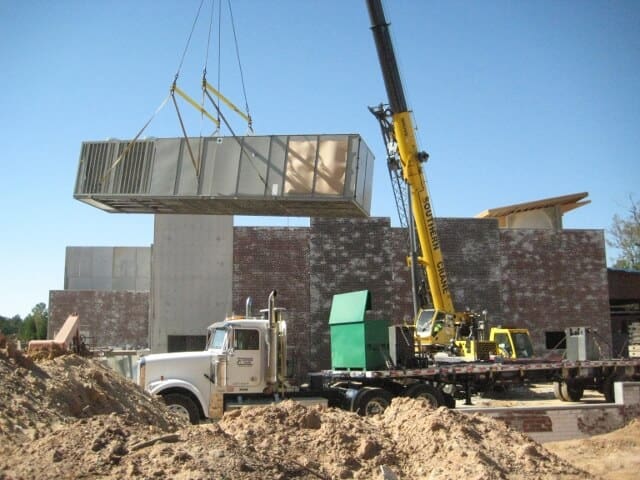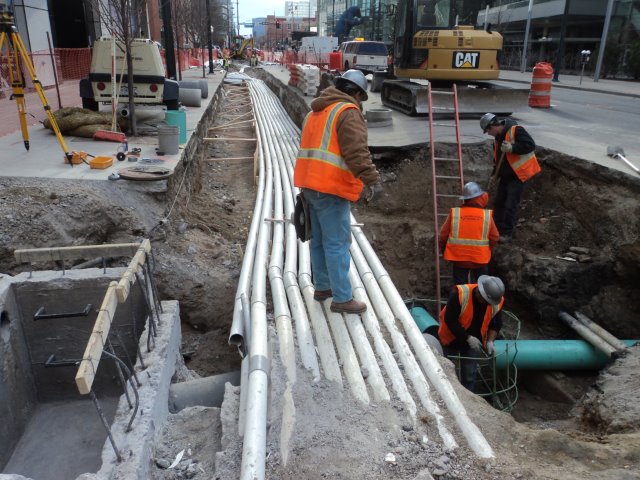Open Wall Construction Technology

Open Wall building is not limited to a solitary technique. The concepts and principles behind the building and construction are unique, yet the style makes use of existing techniques as well as products to allow for complete versatility.
Techniques talked about later explain just one of a number of design models developed, and also supplies examples of the applications, which should be modified to satisfy neighborhood codes and personal choices.
Wrap and Strap Open Wall Building And Construction
This approach is excellent for tradesmen since its application is straightforward, as well as the buildings thermal envelope can quickly be kept. It includes a key covering, which is the buildings architectural skeletal system, being constructed with typical system framing strategies.
The whole structure is after that covered in polyethylene, then a 2nd non-structural skin is attached to the exterior, which is protected as well as finished. This kind of open wall building is made use of to retro-fit existing two by four building and construction right into super-insulated, air limited houses.

System Open Wall Surface Building And Construction
System building and construction methods need that the framing carpenters do not just the structural framing, yet set up the home windows, doors, insulation, air/vapor barrier, outside wetness obstacle and also occasionally exterior surfaces when made use of in paneled wall surface sections.
This approach has been used in the pre-manufacture of exterior walls in sections which are taken care of by 4 employees easily. It is very reliable for consumers, not accustomed to architectural layout, but that want to erect their very own residences.
It is also a much quicker method since the building can be factory developed in other places, delivered, and erected with the vapor obstacle, insulation, electrical, indoor coatings, home windows, doors and also house siding already set up. An one-of-a-kind capability of this technique is the capability of the structure to be detached and relocated sections. This would have optimal applications for alteration and also enhancements, or to perform panel repair/replacement.
Building and construction of pre-manufactured wall surfaces are made in significant areas of 8 foot sizes, and also small sections, in departments of one, two or 4 feet. Corner units are constructed to permit differing outside wall thickness. Wall elevations include over flooring density to maintain indoor ceiling heights of 7 foot 6 inches to nine feet.
Structure
When developing the structure wall surface assemblies, it is necessary to use appropriate materials as well as think about using an elevated, compressed sub-footing. Whether utilizing a granular below footing, a complete elevation concrete footing or a ground and below foundation to boost the wall assembly, the foundation panels can not be backfilled extra that 3 and a half feet. Anymore than this as well as the structural stability of the wall surface will be endangered.
Foundation walls should additionally be constructed with at least two by 8 inch plates to stop lateral plate failing triggered by planet pressures. The bottom plate is of stress dealt with material which has to do with one quarter of an inch smaller sized than non treated building and construction lumber. For more info on Building inspections Tauranga, go to this link.
Due to this, the interior architectural 2 by 3 wall setting up need to overhang home plate by about one quarter of an inch. Exterior wall framework can be made with economy or number three graded lumber as long as it is stress treated to withstand rot. The horizontal economy quality stabilizer and also remaining stud grade plates are non-treated lumber.
The indoor mounted 2 by three wall surface is built initially. It is built with routine framing nails with the studding at sixteen inch facilities. The wall area is then contested and protected to stop motion. Over this, a polyethylene air/vapor obstacle is positioned, with the edges folded up over the outer wall surface participants, as well as stapled along the outside faces. Do not standard the air/vapor obstacle to the sides of home plates or the studs, this will only punch permanent openings in it.
Corner sections require that the air/vapor retarder be wrapped around the indoor wall surfaces collar studding. At this link it is required to guarantee that sufficient of the air/vapor barrier is left to make sure that it will give a surface area to seal to at the interconnecting sections. Corners ought to be nicely folded to stop bunching which would develop air passages and stop correct signing up with of the sections.
Over this, a straight stabilizer is set vertical to the wall studding, and fastened with screws to each specific stud. The stabilizer must be positioned forty-five inches above the sole plate for complete batt insulation positioning. The composite wall surface top plate can after that be fastened to the interior wall top plate, flush as well as real, with typical ardox framing nails.
Individual stress dealt with outside wall studs can then be toenailed to the to top plate at sixteen inches on facility. The pressure treated sill plate is attached, first to the exterior studding, after that the sole plate of the indoor wall surface setting up, the two end studs, after that all outside wall studs. These studs must be lined up straight, and also attached to the horizontal stabilizer with wood screws. Structural wind bracing (when called for) is positioned in the wall section, by being let right into the exterior wall studs.

